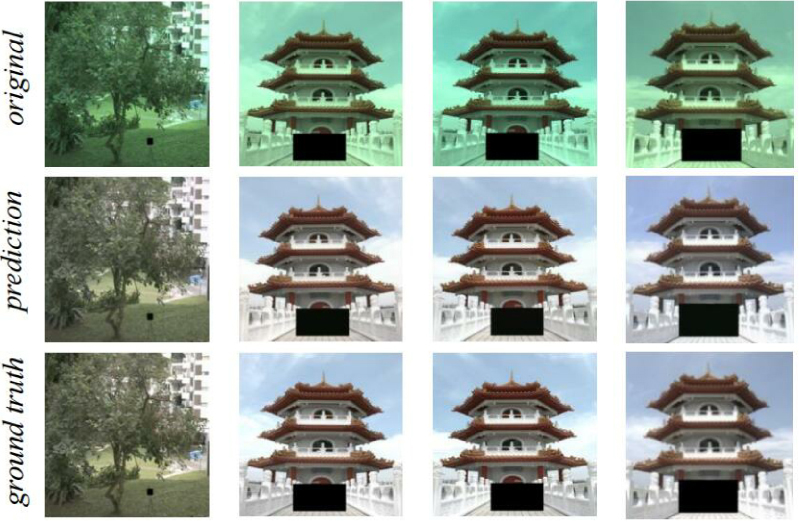References
1JohnstonR. H.EastonR.KnoxK.EschbachR.TusinskiJ.ZapanM. C.1995Digital image restoration technology as applied to ancient degraded textual material using color imaging systemsColor Imaging Conf.3191194191–410.2352/CIC.1995.3.1.art00050
2DuboisE.DanoP.2005Joint compression and restoration of documents with bleed-throughArchiving2170174170–410.2352/issn.2168-3204.2005.2.1.art00037
3WangJ.TanC. L.2011Non-rigid registration and restoration of double-sided historical manuscripts2011 Int’l. Conf. on Document Analysis and Recognition137413781374–8IEEEBeijing, China10.1109/ICDAR.2011.276
4HedjamR.CherietM.2011Novel data representation for text extraction from multispectral historical document images2011 Int’l. Conf. on Document Analysis and Recognition172176172–6IEEEBeijing, China10.1109/ICDAR.2011.43
5LongacreD.
6KlementV.SimonJ. C.HaralickR. M.1981Forensic writer recognitionDigital Image Processing519524519–24Springer NetherlandsDordrecht
7BensefiaA.PaquetT.HeutteL.2005A writer identification and verification systemPattern Recognit. Lett.26208020922080–9210.1016/j.patrec.2005.03.024
8Israel Museum
9van DrieJ.van BoxtelC.2008Historical reasoning: towards a framework for analyzing students’ reasoning about the pastEduc. Psychol. Rev.208711087–11010.1007/s10648-007-9056-1
10WakelinD.2017PaleographyThe Encyclopedia of Medieval Literature in Britain161–6John Wiley Sons, LtdChichester, UK
11TovE.Scribal Practices and Approaches Reflected in the Texts Found in the Judean Desert2018BrillLeiden, The Netherlands
12PopovićM.DhaliM. A.SchomakerL.2021Artificial intelligence based writer identification generates new evidence for the unknown scribes of the dead sea scrolls exemplified by the great isaiah scroll (1QIsaa)PLoS One161281–28
13KumarP.SharmaA.2020Segmentation-free writer identification based on convolutional neural networkComput. Electr. Eng.85106707
14SrivastavaA.ChandaS.PalU.WallravenC.LiuQ.NagaharaH.2022Exploiting multi-scale fusion, spatial attention and patch interaction techniques for text-independent writer identificationPattern Recognit.203217203–17Springer International PublishingCham10.1007/978-3-031-02444-3_15
15NicolaouA.BagdanovA. D.LiwickiM.KaratzasD.2015Sparse radial sampling LBP for writer identification2015 13th Int’l. Conf. on Document Analysis and Recognition (ICDAR)716720716–20IEEETunis, Tunisia10.1109/ICDAR.2015.7333855
16BennourA.DjeddiC.GattalA.SiddiqiI.MekhazniaT.2019Handwriting based writer recognition using implicit shape codebookForens. Sci. Intl.3019110091–10010.1016/j.forsciint.2019.05.014
17HeS.SchomakerL.2021Gr-rnn: global-context residual recurrent neural networks for writer identificationPattern Recognit.11710797510.1016/j.patcog.2021.107975
18XingL.QiaoY.2016Deepwriter: a multi-stream deep CNN for text-independent writer identification2016 15th Int’l. Conf. on Frontiers in Handwriting Recognition (ICFHR)584589584–9IEEEShenzhen, China10.1109/ICFHR.2016.0112
19ChahiA.El merabetY.RuichekY.TouahniR.2020Cross multi-scale locally encoded gradient patterns for off-line text-independent writer identificationEng. Appl. Artif. Intell.8910345910.1016/j.engappai.2019.103459
20ShengH.SchomakerL.2020Fragnet: writer identification using deep fragment networksIEEE Trans. Inform. Forens. Security15301330223013–2210.1109/TIFS.2020.2981236
21ChenS.WangY.LinC.-T.DingW.CaoZ.2019Semi-supervised feature learning for improving writer identificationInform. Sci.482156170156–7010.1016/j.ins.2019.01.024
22KumarV.SundaramS.2024Siamese-based offline word level writer identification in a reduced subspaceEng. Appl. Artif. Intell.13010772010.1016/j.engappai.2023.107720
23HannadY.SiddiqiI.DjeddiC.El-KettaniM. E.-Y.2019Improving arabic writer identification using score-level fusion of textural descriptorsIET Biometr.8221229221–910.1049/iet-bmt.2018.5009
24NasunoR.AraiS.2017Writer identification for offline Japanese handwritten character using convolutional neural networkThe 5th IIAE Int’l. Conf. on Intelligent Systems and Image Processing 2017 (ICISIP2017)949794–7Institute of Industrial Applications Engineers (IIAE)Hawaii, USA
25NguyenH. T.NguyenC. T.InoT.IndurkhyaB.NakagawaM.2019Text-independent writer identification using convolutional neural networkPattern Recognit. Lett.121104112104–1210.1016/j.patrec.2018.07.022
26DurouA.Al-MaadeedS.ArefI.BouridaneA.ElbendakM.2019A comparative study of machine learning approaches for handwriter identification2019 IEEE 12th Int’l. Conf. on Global Security, Safety and Sustainability (ICGS3)206212206–12IEEELondon, UK10.1109/ICGS3.2019.8688032
27KumarP.SharmaA.2019DCWI: distribution descriptive curve and cellular automata based writer identificationExpert Syst. Appl.128187200187–20010.1016/j.eswa.2019.03.037
28RehmanA.NazS.RazzakM. I.HameedI. A.2019Automatic visual features for writer identification: a deep learning approachIEEE Access7171491715717149–5710.1109/ACCESS.2018.2890810
29DurouA.ArefI.EratebS.El-mihoubT.GhalutT.EmhemmedA.2022Offline writer identification using deep convolution neural network2022 IEEE 2nd Int’l. Maghreb Meeting of the Conf. on Sciences and Techniques of Automatic Control and Computer Engineering (MI-STA)434743–7IEEESabratha, Libya10.1109/MI-STA54861.2022.9837764
30DarganS.KumarM.GargA.ThakurK.2020Writer identification system for pre-segmented offline handwritten devanagari characters using k-nn and svmSoft Comput.24101111012210111–2210.1007/s00500-019-04525-y
31BulacuM.SchomakerL.PetkovN.WestenbergM. A.2003Writer style from oriented edge fragmentsComputer Analysis of Images and Patterns460469460–9SpringerBerlin, Heidelberg10.1007/978-3-540-45179-2_57
32DiamantatosP.KavallieratouE.GritzalisS.2022Directional hinge features for writer identification: the importance of the skeleton and the effects of character size and pixel intensitySN Comput. Sci.31181–1810.1007/s42979-021-00950-9
33BreretonR. G.LloydG. R.2010Support vector machines for classification and regressionAnalyst135230267230–6710.1039/B918972F
34TobingT.Yildirim YayilganS.GeorgeS.ElgvinT.2022Isolated handwritten character recognition of ancient hebrew manuscriptsArchiv. Conf.19353935–910.2352/issn.2168-3204.2022.19.1.8
35TobingT.ŠkrabánekP.Yildirim YayilganS.GeorgeS.ElgvinT.2023Character-based writer verification of ancient hebrew square-script manuscripts: on edge-direction featureArchiv. Conf.20155158155–810.2352/issn.2168-3204.2023.20.1.32
36HsuC.-w.ChangC.-c.LinC.-J.

 Find this author on Google Scholar
Find this author on Google Scholar Find this author on PubMed
Find this author on PubMed
 Open access
Open access